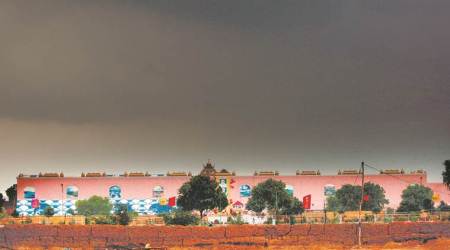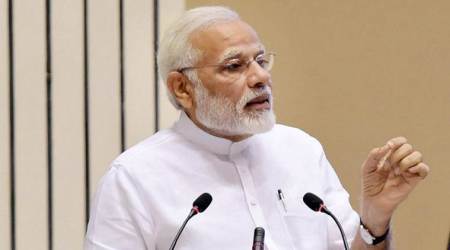 I observed during the Iran trip that it is an Islamic and an anti-American country. However, the American lifestyle is extremely popular in Iran. (Representational/Wikicommons)
I observed during the Iran trip that it is an Islamic and an anti-American country. However, the American lifestyle is extremely popular in Iran. (Representational/Wikicommons)
If travel has become easy these days, writing a travelogue has become difficult. Of the many reasons for this, the most prominent is that the Internet has opened up several thousands doors of information. What information can you share with anybody in this shrinking world? Many of us already know a lot about the world. When travel writers of another era gave even general information about other countries, readers found in it the glimpses of a new world. The new travel writer is required to write what is not available on the Internet, which implies that a writer must keep a close eye on those things that are extremely important but remain ignored. A writer is also required to grasp the undercurrents of the new society. A superficial eye cannot write travelogues.
I observed during the Iran trip that it is an Islamic and an anti-American country. However, the American lifestyle is extremely popular in Iran. What could be its reason? Religion dominates only the lower middle class in Iran, the upper and the middle class are not so influenced by religion as it is believed to be.
The famous Hindi writer and scholar Mahapandit Rahul Sankrityayan had a travel shastra. He believed that travel opens up the doors of wisdom. He made many difficult travels and wrote travelogues running into thousands of pages. No Hindi writer, I believe, has had a greater love for travel than he had. Ajneya and Nirmal Verma also wrote good travelogues.
If someone asks me why I like travelling, I would not have a direct answer. First, my eye is always in search of new scenes, which inspires me to reflect on something new… To write this scene and convey its meaning to others is a bigger challenge. Thus travel is not mere roaming around, it establishes a bond with the new society and its people. I consider my travel social tourism. To meet people is an extremely significant task for me.
Two things are particularly important if you are meeting people: You should have sufficient time, and you should know local people… It can be extremely interesting to visit places and countries not usually frequented by people. It is always my endeavour to view things others do not. They have more interest in buildings than people, but I have more interest in people, in comprehending societies. Sometimes, in the process, I view things that are even difficult to imagine.
Once, I visited Mizoram. Its capital, Aizawl, seemed to me like Shimla. I asked locals about any smaller town or place that could give me a sufficient opportunity to meet people. Someone suggested Champhai, a small town on the Myanmar border. When I went there, I was told that there is an extremely beautiful lake across the border. I did not have a passport or visa. But if you have the will, there is a way. I crossed the international border without a passport and reached the lake.
Looking for smaller places in Mizoram, I reached Lunglei and then Chawngte village of Chakma tribals along the Mizoram and Bangladesh border. I was told that it was an autonomous region, as Chakma tribals run the local administration in a democratic manner. I also met the ‘chief minister’ of the autonomous region and found that he was not as ‘simple’ as he was expected to be, compared to other chief ministers. I also gathered that perhaps the administration was not performing its duties towards the people. Many people had complaints. The area was infested with mosquitoes that caused fatal malaria.
This village of wood and bamboo did not have any hotel. I stayed in a room of the panchayat office. Its condition suggested no one had stayed here for years before me. This stay in a Chakma village, meeting people, observing their homes from inside, comprehending their lives and witnessing their “autonomy” was a new experience.
I also saw a beautiful Buddha temple on a hillock, a little distance away. Many priests live in this temple surrounded by mango and banana trees. I could not talk to the priests as they did not speak Hindi, but conversed a little through the local guide.
I was attracted not by the glittering countries of Europe but the Maramures region on Romania-Ukraine border. I travelled through the area intensively. I visited Merry Cemetery in Sapanta village, which is perhaps without any parallel in the world.
Social tourists have rare experiences that eclipse those whose eye is confined to cities and buildings. In Port Blair, for instance, I saw a Rs 10 note that was issued by the Japanese government and a photograph in which Japanese officers had clean-shaven all the residents of Port Blair who had moustaches and beards.
Social tourism also has some dangers. In Tehran, for instance, I was arrested by the police because I had taken photographs of the US Embassy… I was taken to the police station, and interrogated for three hours… With great difficulty, I managed to save myself. Also, a thug had looted me in Tabriz.
Non-fiction literature is being widely spoken about in Hindi literature these days. Sahitya Akademi has published a compilation, Kathetar, this year, which has 20 writers who bring forth facets of Hindi non-fiction. Pankaj Bisht’s Kharama Kharama and Anil Yadav’s Wah Bhi Koi Des Hai Maharaj are among recent travelogues that have made a mark.
I have written three books on travel in Hindi. One on Iran, second about my Pakistan visit and the third on the Northeast. I am surprised these have been published in other Indian languages and have a readership. People now want to read travelogue or non-fiction, more than poetry, short story or novel. Many young Hindi writers are writing travelogues and it seems that it would become an important form of literature in future.

